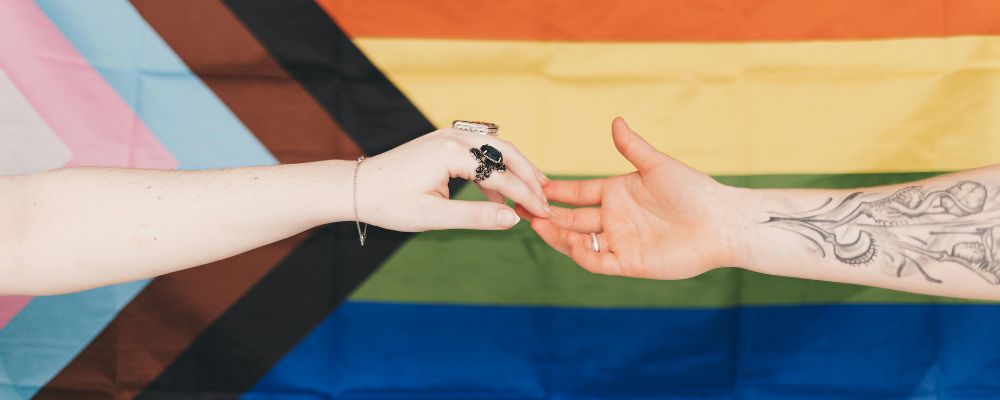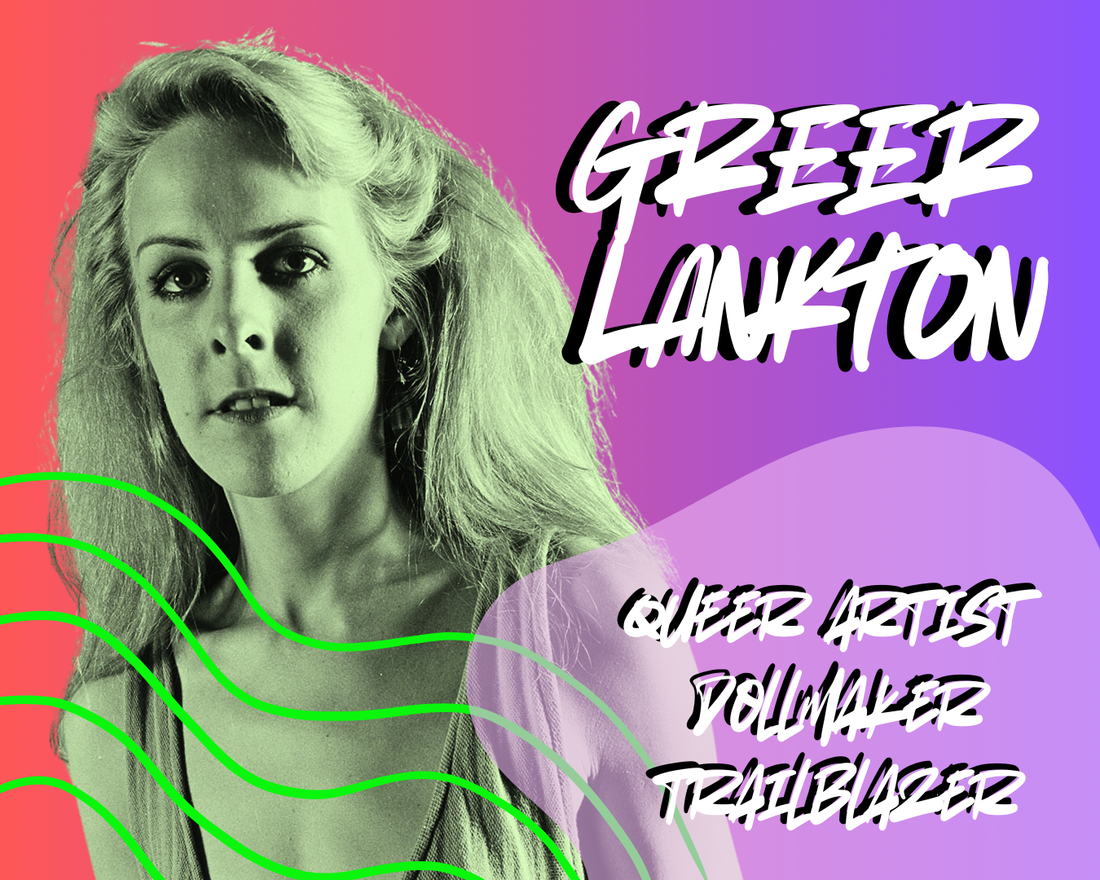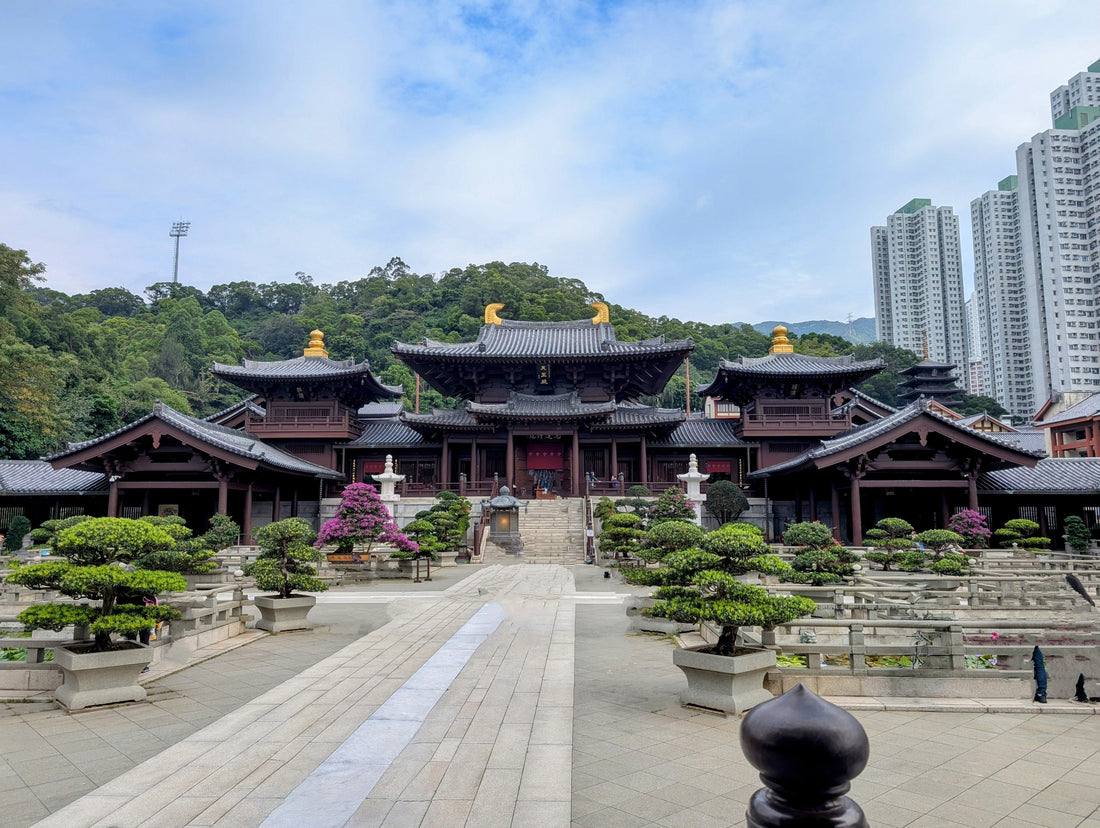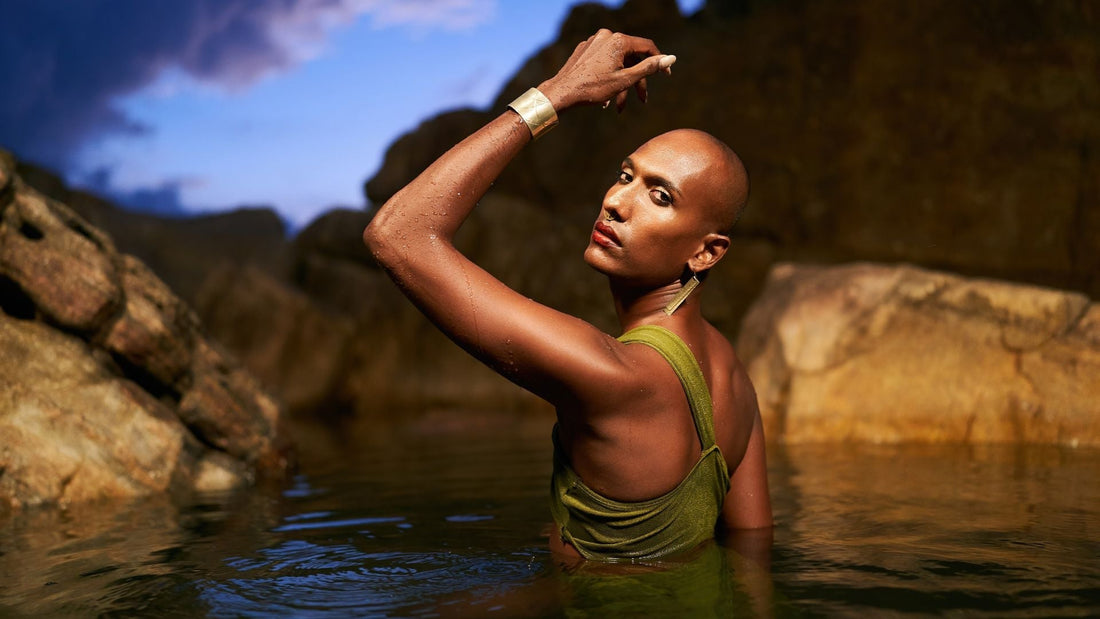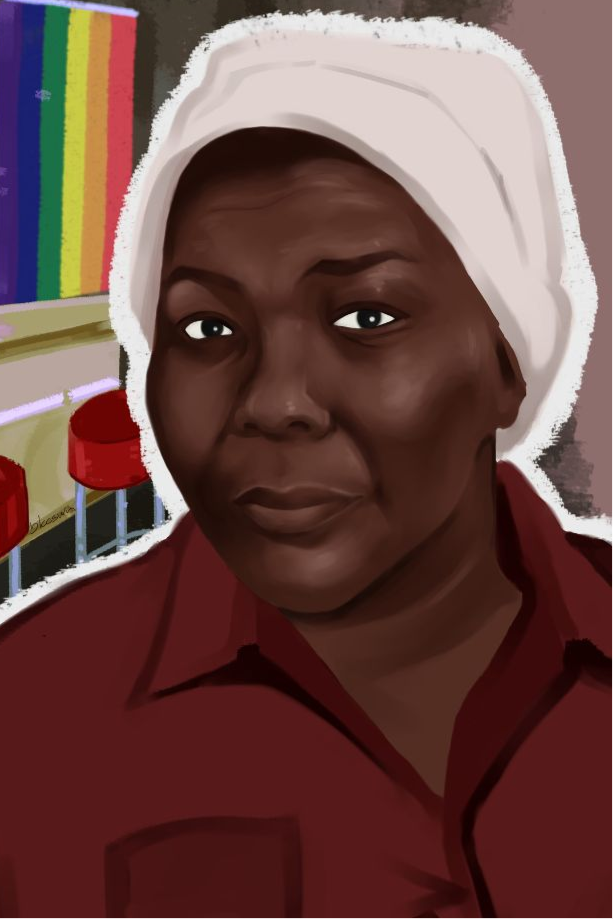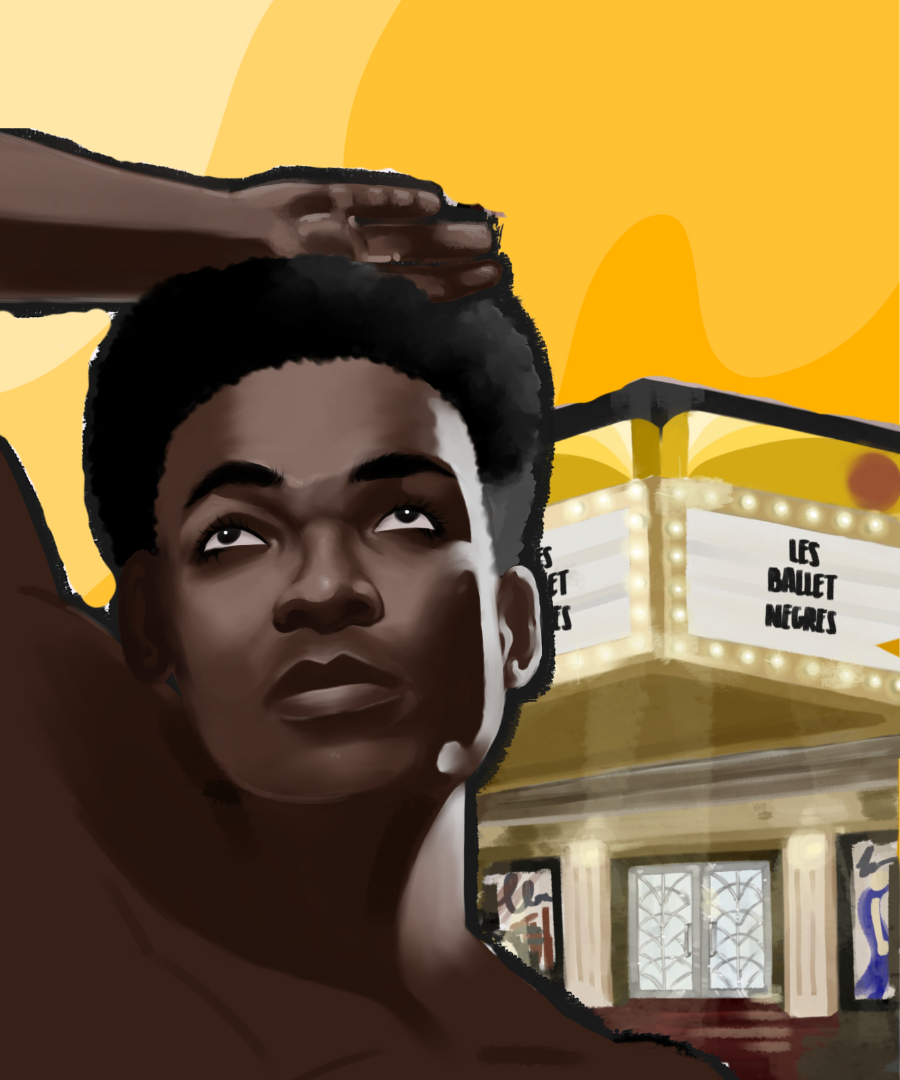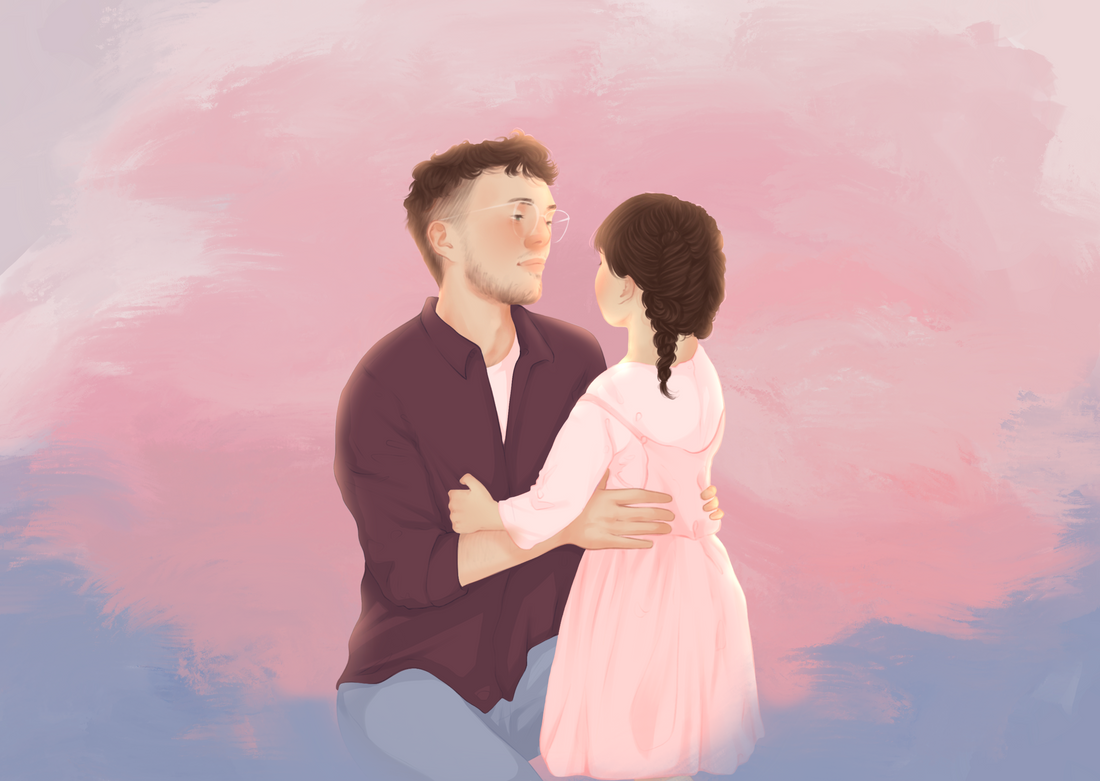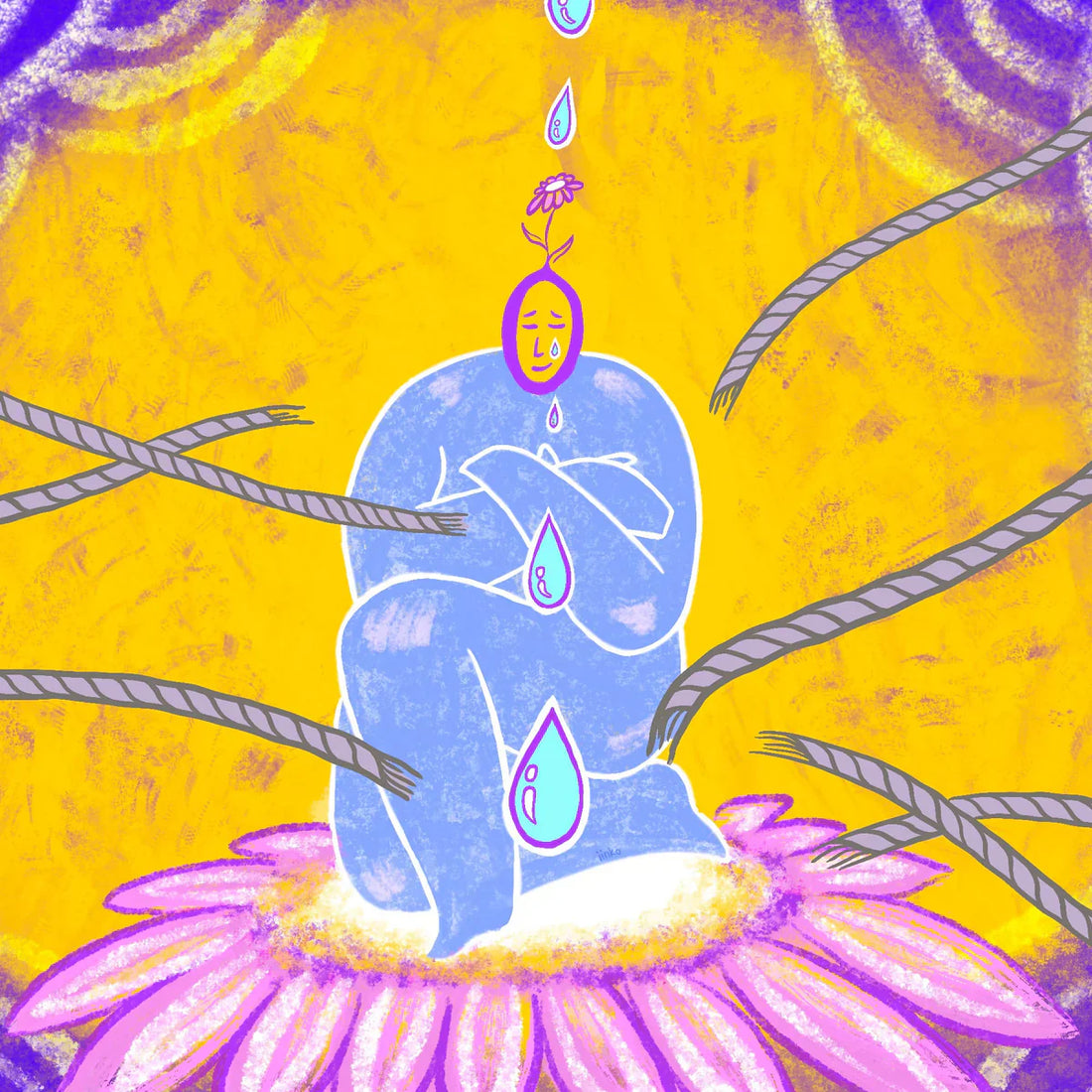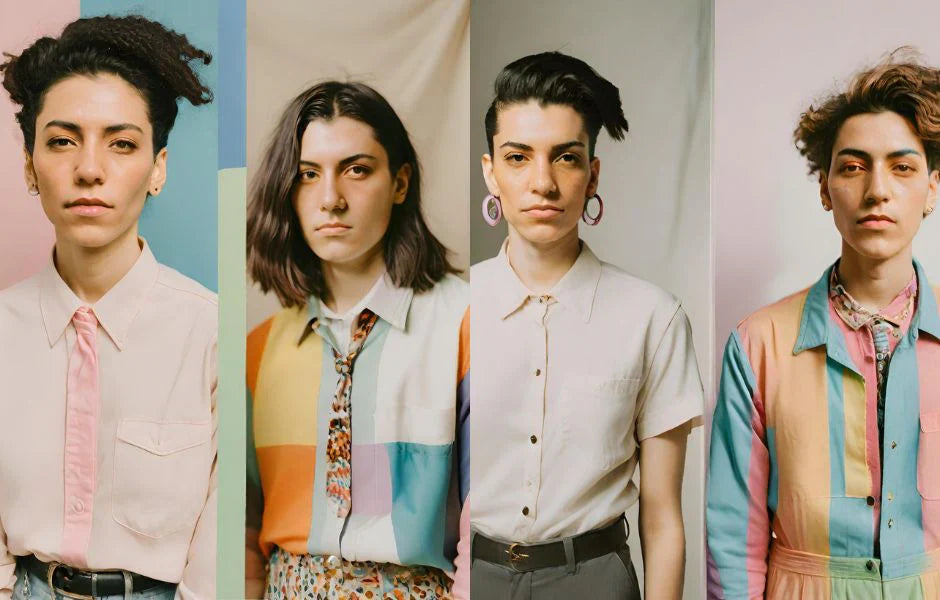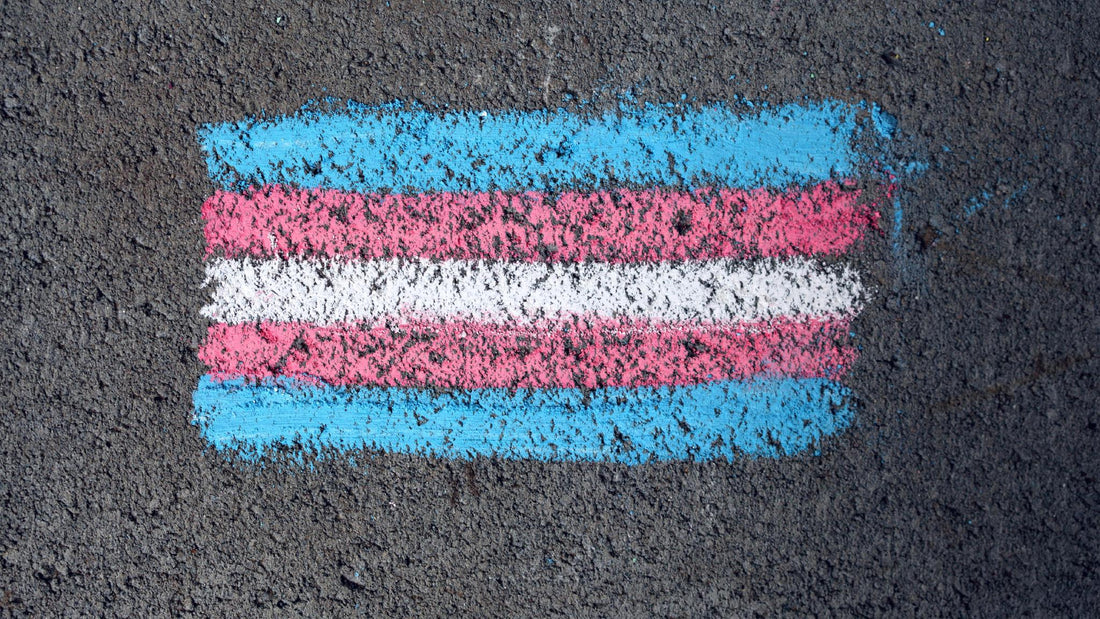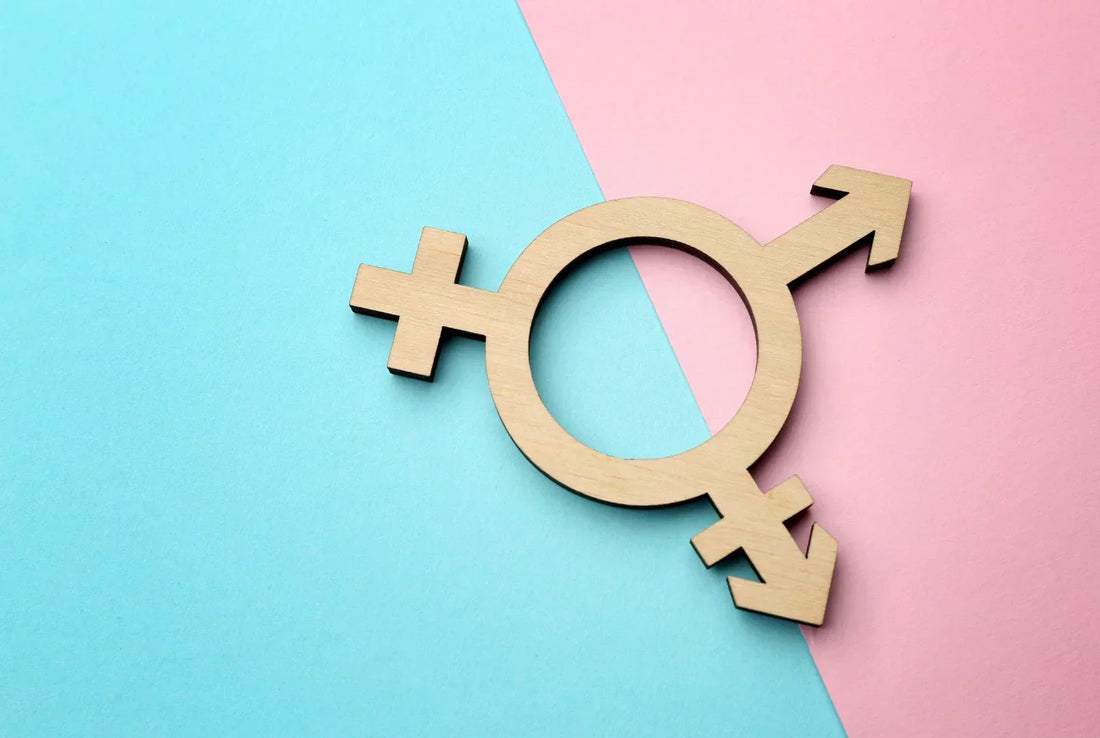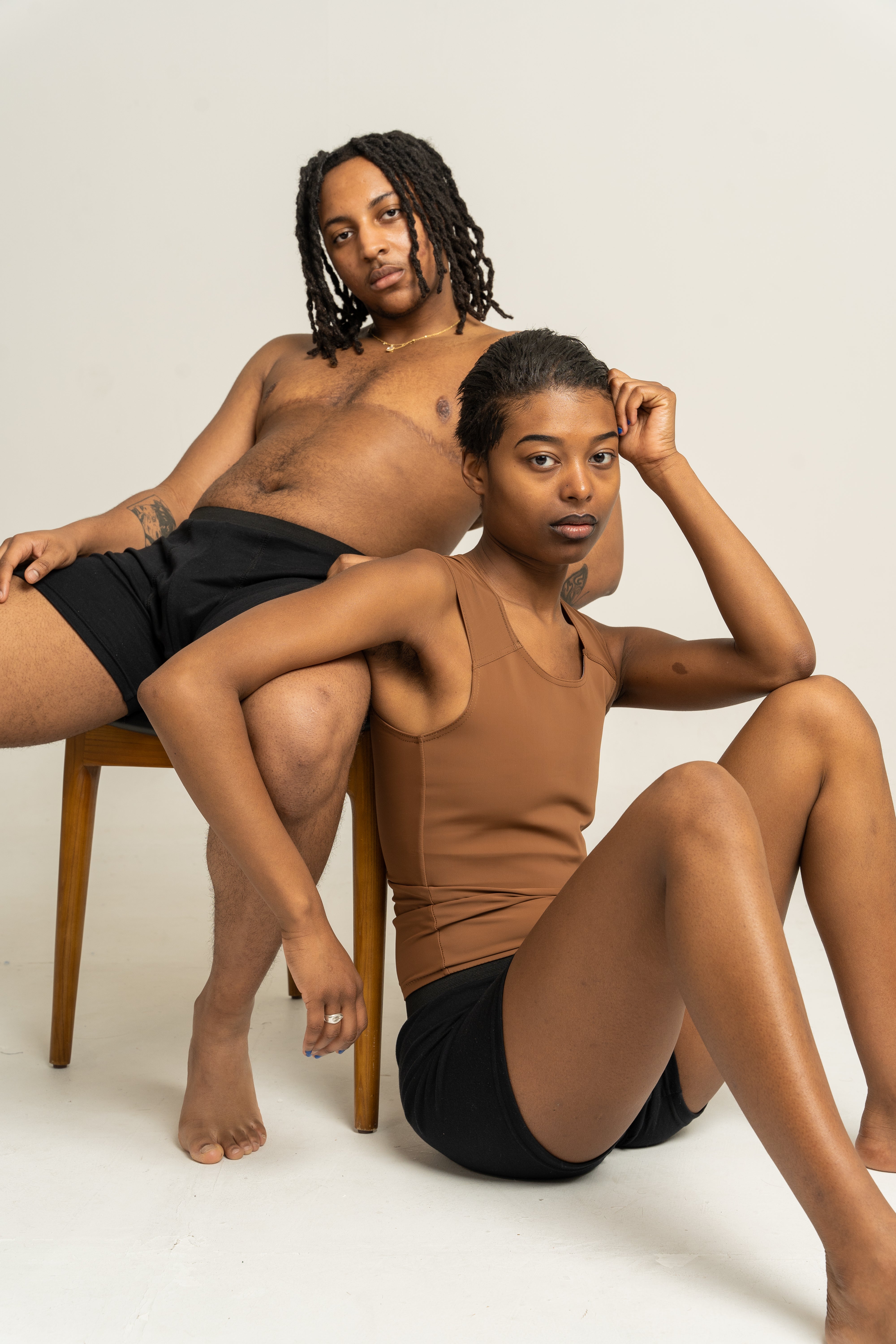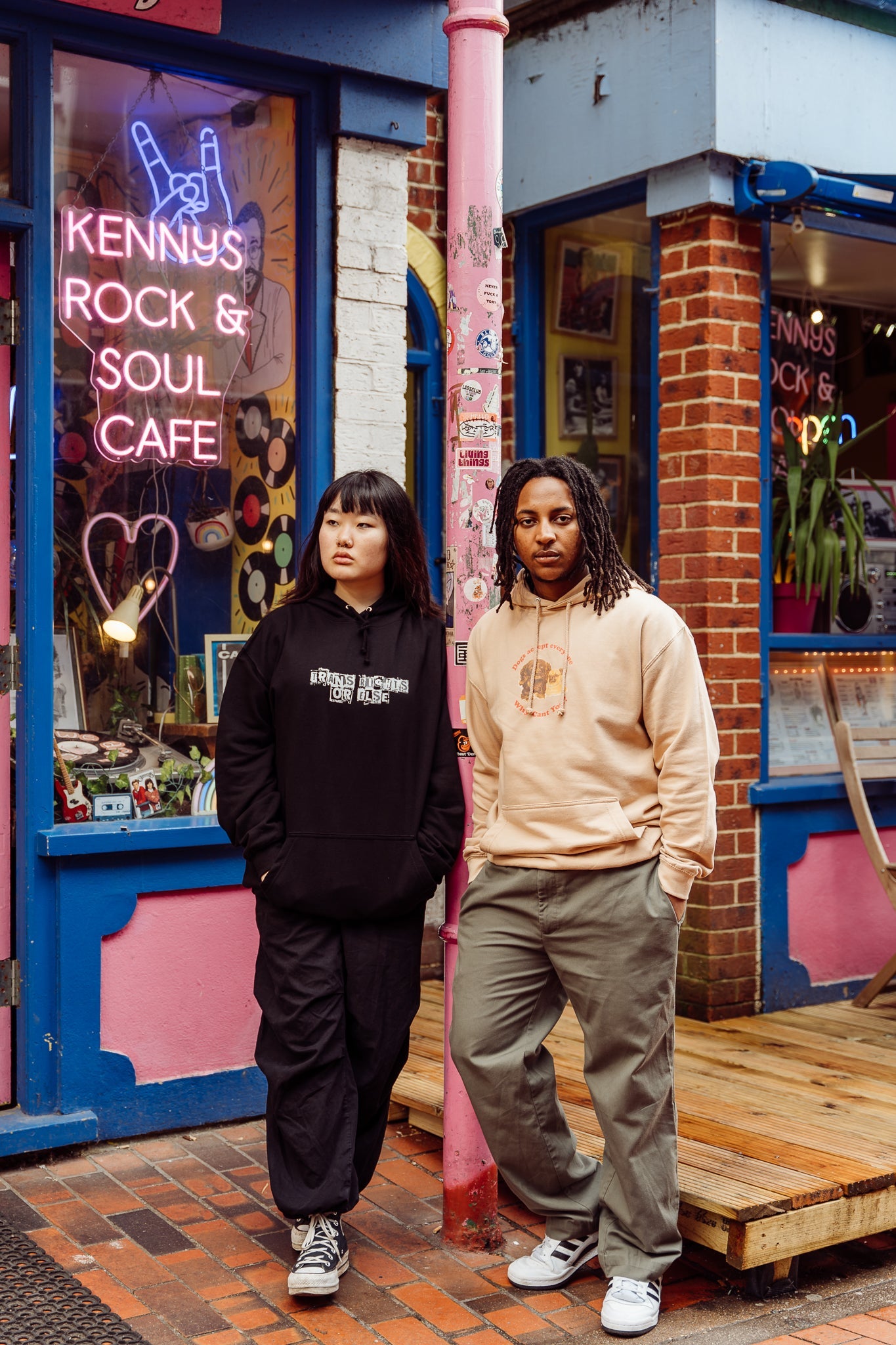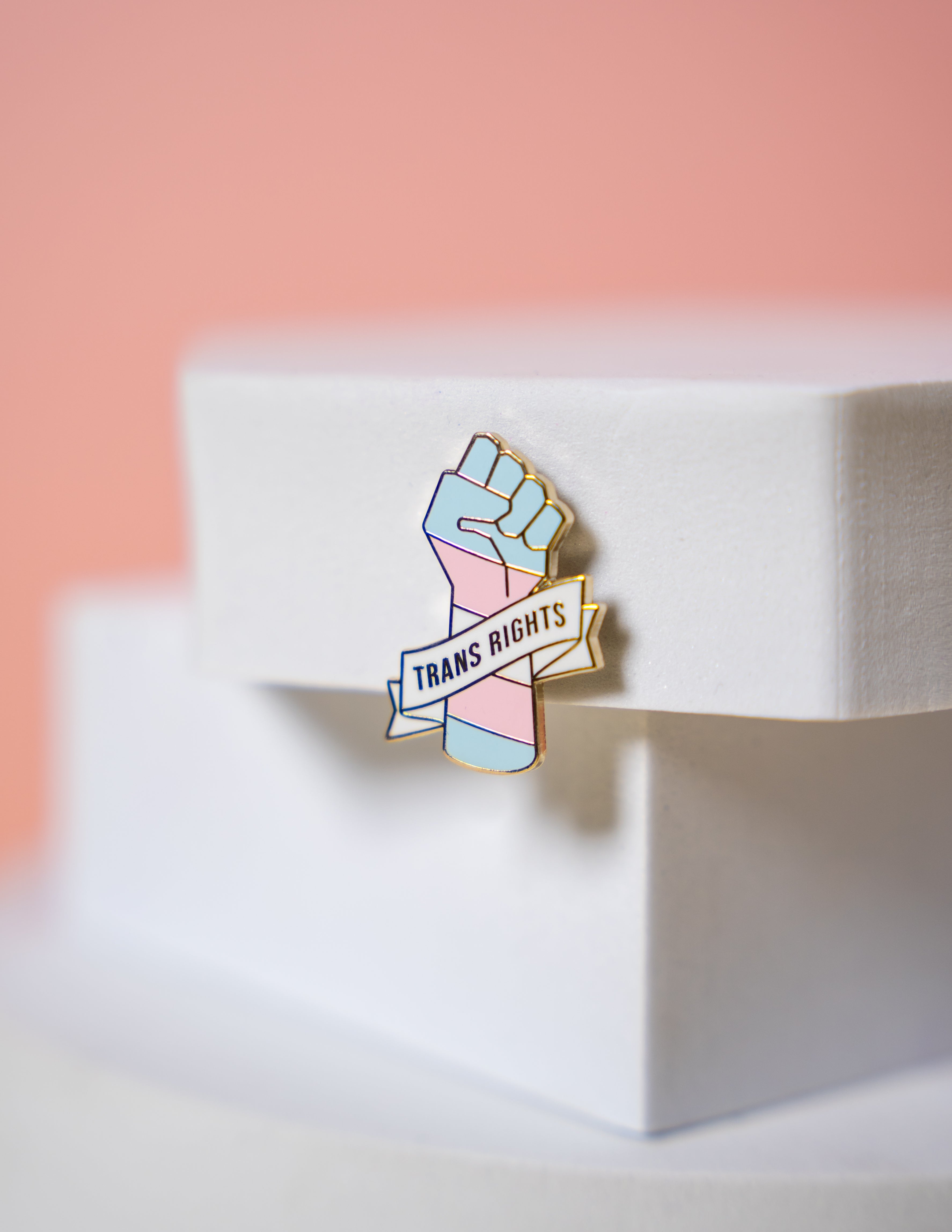Spectrum Spotlight
Celeb trans allies who put a certain children’s author to shame 👀
This Pride, we would like to take a second to highlight some positive instances of support from some superstar trans allies. Despite the consistent attacks faced by the trans community, from a certain disgraced children's author and various hateful politicians, there are still lots of people who love and support us. These are just a few of some of the world's most notable allies. Robert De Niro One of the worlds most famous and respected actors has recently come forward in support of his trans daughter. Airyn De Niro, introduced herself to the world this year in a beautiful interview with Them. At the time, when asked about Airyn, De Niro said: “I love and support Airyn as my daughter. I don't know what the big deal is, I love all my children." View this post on Instagram A post shared by BuzzFeed UK (@buzzfeeduk) More recently, he addressed the topic again in an interview with Entertainment Tonight, stating: “Well, there's certain things you can do and certain things you can't do, but the main thing is to support your kids,” He continued: “As long as they’re not hurting themselves, doing anything destructive or anything like that, you have to support them. Period." The two-time Oscar winner is extremely popular with cis men and some of his most notable roles are that of gangsters or other examples of extremely toxic masculinity. In light of this, his supportive comments come as a breath of fresh air, bringing hope that his openness can inspire other cis men. Kate Nash With her new track ‘GERM’ Kate Nash is directly calling out She Who Shall Not Be Named and other TERFs in style. The lyrics address the recent supreme court ruling, highlighting that trans people aren’t a threat to women. “Women are facing serious dangers not during boxing matches or from trans people needing a piss But from actual violence that is carried out against them every week” The song also features important statistics about misogyny and toxic masculinity. In an interview with Attitude magazine, she said: “Feminism is dismantling systems of oppression, so to be transphobic is not feminist. Feminism has to be intersectional. So I wanted that on record, because at the moment, the loudest cultural voice in the room, who created one of the most successful things ever to come out of the UK, Harry Potter, is transphobic, and is very cruel online and very crass, and it’s just become so nasty. I just need to put this out into the world, even just so in history, this exists. I hope that it also allows other cis women and feminists to be more vocal and be less afraid to approach the subject, because I think people are afraid to talk about it.” View this post on Instagram A post shared by Kate Nash (@katenash) Kesha Pop diva Kesha came out swinging for the dolls at London festival The Mighty Hoopla. She headlined the festival rocking a ‘Protect the dolls’ tee and brought out Jake Shears of Scissor Sisters fame to spread some queer love. They performed a mash up of the iconic queer Scissor Sisters track ‘Lets have a kiki’ and Keshas own ‘We R who we R’. View this post on Instagram A post shared by Mighty Hoopla (@mightyhoopla) Pedro Pascal The internet’s daddy, Pedro Pascal, has long been a vocal supporter of trans rights. Most recently, he’s been seen wearing a ‘Protect the dolls tee’ and calling She Who Shall Not Be Named a “heinous loser” in an Instagram comment under a video by writer and activist Tariq Raouf. Pedro’s sister, Lux Pascal, is a trans actress, model and activist. Lux has appeared on a number of Chilean soap operas and dramas as well as appearing alongside Pedro in Netflix’s Narcos. View this post on Instagram A post shared by Pedro Pascal he/him (@pascalispunk) Daniel Radcliffe Award-winning actor Daniel Radcliffe, got his start in the industry appearing as the lead role in the film adaptation of You Know Who’s books. But, in light of her constant attacks on trans people online and in the press, Daniel felt it was important to stand up for trans people. He wrote a statement, published by The Trevor Project a trans non-profit that he has supported for the last decade. In the statement, Daniel states: “Transgender women are women. Any statement to the contrary erases the identity and dignity of transgender people and goes against all advice given by professional health care associations who have far more expertise on this subject matter than either Jo or I.” Jade Thirlwall On Saturday 31 May, pop diva Jade Thirlwall led the crowd of The Mighty Hoopla, in saying “Fuck You” to She Who Shall Not Be Named. Since rising to fame in the pop group Little Mix, Jade has consistently defended the trans community. In 2021 the talented singer won a Gay Times Allyship award in 2021 and more recently commented on her responsibility to speak out against growing transphobia: “Cancel culture is thriving right now. When you're in the public eye, it’s quite scary. I’ve always been vocal, and I’m not always going to get it right. But you can’t be a pop artist these days without speaking out on certain issues” “We’re seeing an attack on the trans community, and with my large LGBTQ+ fanbase, I can’t sit back and not defend that community. I’m happy to face the consequences if it means doing the right thing.” View this post on Instagram A post shared by GLAAD (@glaad)
Learn moreGreer Lankton | Queer artist, doll maker, trailblazer
Original image: Peter Hujar, 1983 Greer Lankton | Queer artist, doll maker, trailblazer A talented artist with a troubled soul, Greer Lankton faced many challenges throughout her life, and her artwork provided her with comfort amidst the chaos. However, some critics believed she relied too heavily on her artwork leading to an obsession, burnout and her eventual undoing. View this post on Instagram A post shared by Greer 💖 Lankton (@greer_lankton_archives_museum) As a child, Greer was drawn to feminine clothing and playing with dolls. As she was AMAB her family wouldn’t allow her to play with ‘feminine’ toys as they disapproved of her breaking the gender binary, so she often made her own dolls out of socks and pipe cleaners to keep her company and give her an outlet to explore gender expression. Even though her self-expression was dimmed by her parents, her early artistic ambitions were supported by them. She entered and won many shows and competitions all over the Midwest, before moving to New York in 1978 in her early 20s to study at the Pratt Institute. View this post on Instagram A post shared by Greer 💖 Lankton (@greer_lankton_archives_museum) Greer became engrossed in the process of creating dolls. She composed them out of soda cans, wire, tape, paper, plaster, stockings and finished them with realistic glass eyes. One was described by Nan Goldin, one of Greers contemporaries and friends, as "A huge cloth hermaphrodite giving birth", this was said to have been made after a dream in which Greer gave birth to herself. Her work mainly focused on sexuality, gender and the effects of consumerism, with Goldin suggesting that “In bringing her dolls to life, Greer worked through her own traumas with her dolls”. Lankton battled with an eating disorder for many years, and her unhealthy relationship with food was expressed within her dolls. Many were seen with flared ribs, emaciated, while others were unhealthily overweight. The creation of her art was intertwined with her own life and complicated relationship with body image. Hilton Als, an American writer and Theater critic, wrote how ‘’No artist is down on her luck when she has her art. It’s what Greer fed on, even when she ate no other food at all. Her dolls were starved for our attention.”. Greer also struggled with continuous substance abuse when she relocated to New York, which also had influence on many of her doll’s looks. They were a reflection of her own addictions, traumas and struggles with her gender identity. View this post on Instagram A post shared by Greer 💖 Lankton (@greer_lankton_archives_museum) Like herself, Greer’s dolls were constantly being reworked – she had an approach that the human body was in a constant state of metamorphosis, influencing her into obtaining a habit of changing the doll’s size, gender, and clothes frequently. In some way, she was her very own doll surrounding herself with a family of ‘freaks’. Greer derived much of her inspiration from celebrities as well, creating them in glamorous and sometimes haunting lights. Some examples would include; Candy Darling and Divine. Greer underwent gender-affirming surgery aged 20 in 1979. At this time the surgery was riskier and more experimental than today. Her husband, Paul Monroe says she suffered from pain and complications from the surgery until her death. View this post on Instagram A post shared by Greer 💖 Lankton (@greer_lankton_archives_museum) Greer and Paul were married in 1987 and are said to have divorced in 1992 although Paul himself states they never really divorced. In the early 90’s while dealing with the loss of many of her friends through the aids pandemic she moved back to Chicago to focus on her own ill health. Her career began to dwindle from the art world until, in 1995, she got given an opportunity to put on an exhibition for the Mattress Factory in Pittsburgh. Margery King, the curator of The Mattress Factory and Michael Olijnyk, went to visit Greer about the exhibition, arriving in Greer’s small apartment which was overflowing with her dolls in all stages of production. Her home was such an incredible display of her talent, Michael and Margery both agreed that Greer could reproduce an installation inspired by her apartment for the exhibition. View this post on Instagram A post shared by Greer 💖 Lankton (@greer_lankton_archives_museum) Many agree that those last moments of Greer bringing to life her installation, ‘It's all about ME not you’, were some of her happiest in a while. She was surrounded by admirers and completely engrossed in her work. Though down to 90 pounds, she always wore a smile, and her work ethic was beyond extraordinary. She sadly passed not even a month after the exhibition had been unveiled to the public by accidental overdose. Greer’s passion for her art allowed her to have a creative outlet for her pain and suffering during her struggles with substance abuse, addiction and a severe mental health disorder. Greer’s friend and photographer Nan Goldin described Greer’s work as “so visceral, so exposed, that I once told her it was like an operation without anesthesia.” Critics may have said her obsession with her art bought about her eventual undoing, but according to those closest to her it seems like she used her creative outlet as a form of therapy. Greer granted other queer and trans individuals the opportunity to be seen; something so valuable during her lifetime and today. Sources https://greerlankton.com/ https://www.artnet.com/magazineus/features/morton/morton1-26-07.asp By Julia Morton https://www.artforum.com/features/greer-lankton-162842/ By Nan Goldin https://www.artsy.net/article/artsy-editorial-1980s-icon-greer-lankton-explored-glamour-gender-eerie-dolls By Alina Cohen
Learn moreTrans Travel: Solo trip to Hong Kong
Before we begin the journey, I’ll share some background information about myself. I'm Parker, a 19-year-old trans man with a passion to explore different environments and cultures all over the world. I have been wanting to start travelling for years and with no-one jumping at the opportunity to join and finally being at an age where it is easier to travel alone, I decided to give solo travelling a try. With Hong Kong being a direct and cheap ticket at the time, I booked it with a month spare to prepare and plan my trip. Truth be told, I’m a big procrastinator and ended up booking the majority of my plans after I arrived, while focusing primarily on the language and cultural do's and don'ts during the month leading up to my departure. The thought of going alone to a different country surprisingly caused me little to no worry, in fact it didn’t hit me that I was travelling alone at all until I was standing in the Hong Kong International airport without anyone to help guide me where to go. It is important to remember that everyone can react to experiences differently – so if the thought of solo travel makes you feel anxious, read on and I hope I'll be able to assuage some of that anxiety. Always keep in mind that even though you are alone physically, there are so many people willing to help all around you! Now, on to Hong Kong. It is a special administrative region of China and has a population of around 7.5 million people, making it the fourth most densely populated region in the world. It is commonly known as a paradise for shoppers, with over 700 shops located only within Tsim Sha Tsui, however I found on my journey that it’s more than just shops and has something that every type of person will enjoy. From British-inspired, Hong Kong cuisine for foodies, to more modern Hong Kong-style dishes and light and aromatic traditional Cantonese food there are incredible tastes around every corner. To keep you busy during the day, you can try hikes with breathtaking views of the panoramic cityscape, bustling city streets and peaceful monasteries. I’ll take you on my trip around Hong Kong with some helpful tips and guidance for other LGBT+ solo travelers. Is Hong Kong Safe and LGBT+ Friendly? Hong Kong is generally considered an LGBT+ tolerant destination and I definitely felt that way too. During the week I spent within the city, I felt incredibly safe and welcomed, and often ventured out at night with no problems or predicaments with locals or other tourists. Whenever I ate out at restaurants and went shopping, the locals were incredibly kind and often helped me choose what was the best food to have or places to go. Hong Kong has a low violent crime rate, but like anywhere you may encounter pickpocketing or petty theft. Due to how crowded it can get within the cities and trains, make sure to always keep your personal belongings close and your wits about you. It is important to recognise that Hong Kong still does not recognize same-sex marriages and has limited legal protection for sexual orientation-based discrimination. I never experienced any altercations during my stay, but I would advise caution for how openly you express yourself and minimise PDA if you bring your partner as it can attract stares. Another thing to keep in mind is how you’re getting there. Some flight routes have layovers in countries which are not LGBT+ friendly so please keep that in mind when booking your flights. How to get around? There are three main regions in Hong Kong: Hong Kong Island, Kowloon Peninsula, and the New Territories. My accommodation was within Tsim Sha Tsui, Kowloon, and to be able to get around the whole of Hong Kong I only used the MTR (the mass transport railway). With around 5 million people using it daily, The MTR is the go-to way to get around Hong Kong by both locals and tourists. It has a very well-designed network and runs smoothly with little to no cancellations or train delays. It can be confusing for the first time with all the different routes, so using the MTR App to plan your journeys, see timings, and the costs of the trains is extremely helpful. Once you understand how it works, it is the cheapest and easiest form of transport to get you around Hong Kong. However, the MTR may not be able to get to the more rural areas and the new territories. For these, another quick and cheap alternative would be buses, all the bus routes/timings and costs would also be on the MTR app. An Octopus Card which you can get off Klook, an online app, for £9 and collect from the airport, is a safe, convenient way to make payments when you’re using public transport. Both Uber and Taxis are available to get as well in case you find the public transport overstimulating or if you need a quick pick up/drop off. How long do I stay for? I spent 7 days within the city and as someone who can get overly stimulated with loud noises and people, I believe around 3 days would be more than enough time to allow you to visit monuments and monasteries whilst also checking out the famous shopping malls like K11 and Harbour City. The bustling and crowded atmosphere can be strenuous after 3 days if you aren’t used to busy streets, so island hopping or taking a trip around the new territories make a good addition to your trip. With over 200 islands to choose from you’ll be spoilt for choice! I regret not taking advantage more of the rural islands as I stayed mostly in the more populated areas. Attractions to visit and activities to attend: Tours - I attended two tours during my stay. One tour was around Central Hong Kong and was centered around learning the culture as well as getting to experience a traditional dim sum restaurant lunch. While the other tour focused on exploring Lantau Island’s fishing village, visiting the Big Buddha and then getting the Ngong Ping 360 back to Central Hong Kong. Tours are a great thing to incorporate into your stay if you get anxious exploring by yourself, want some extra structure to your day, or if you simply want to get some local insight into Hong Kong’s past and its hidden gems. Lan Kwai Fong Bar Crawl - A sure way to meet people during your stay is to go on a bar crawl. If you want to meet other travelers and enjoy a drink in the process, I would highly recommend booking one. While meeting a group of strangers and engaging in conversation may seem incredibly daunting, you end up meeting people from all over the world and having some priceless moments and memories. After your bar crawl, there are many gay/Lesbian bars in Hong Kong which you can attend, such as Bing Bing and L’Paradis. I sadly did not have time after to attend these as the last train back to where I was staying was at midnight, however the reviews speak for themselves. (As always, make sure to be safe and keep your location on for a friend or family member with regular updates.) Victoria Peak – Victoria Peak is a mountain that looms over the skyscrapers within the city, at a height of 552 meters, it is the tallest point in all of Hong Kong. By taking a tram, which is the fastest and cheapest way up, you will encounter landscape views of the city which are unparalleled. Dragons Back Trail – Dragons Back Trail is an 8.5-km-long trail which takes between 2 and 5 hours to complete depending on your fitness level. It is located around the southeastern corner of Hong Kong Island. Make sure to pack snacks and drinks as there are no restaurants along the trail! The views on clear days are extraordinary but due to this you may come across a lot of people. Star Ferry - The Star Ferry is a passenger ferry service with its main route going across Victoria Harbour linking Hong Kong Island and Kowloon. The views at night across the Ferry are beautiful and with prices from around £2-£5 it's a must-see attraction. Nan Lian garden & Chi Lin Nunnery - Nan Lian Garden is a classical Chinese garden with a souvenir shop and a vegetarian food restaurant on site. Right next to the garden, connected by a footbridge over the road, is Chi Lin Nunnery which is a large Buddhist temple complex dating from the 1930’s and a charitable organisation since 1963. Inside you’ll find Tang Dynasty architecture and Buddhist relics. The closest MTR station to these destinations is Diamond Hill. Where to eat? Breakfast: My Cup of Tea/Australian Dairy Company (only accepts cash) Lunch/dinners: Ding Dim 1968/Dim Dim Sum/Chin Sik Sweet food/drinks: Mammy Pancake/Bakehouse/The Alley Vegetarian options are available, but Vegan options are limited to none. Where to stay? If you want to meet others and make friends on your trip, a hostel is an affordable and great option. There are private rooms available too if sharing a room doesn’t sound appealing. You can use search filters when searching for hostels/hotels such as LGBTQ+ Friendly to ensure you have booked a place which will make you feel safe and comfortable. There are many hotels within Hong Kong when looking on Booking.com, but don’t forget to check out Airbnb for any deals! Important note: passing privilege It’s important to recognise that even though I am a trans man, I am far into my transition and pass quite well. I may have been treated differently if I went at the beginning of my transition or if I were a trans woman for example. We all have different and unique experiences, and my experiences may not reflect those of other LGBT+ travellers views on Hong Kong. If you feel comfortable, please share your experiences of travelling as a trans person in the comments. We would love to hear what you think. Extra Tips: Book your Tours and activities through ‘Get Your Guide’ or ‘Klook’. Use Google maps to save places you ‘want to go’; this makes planning your day easier. Helpful Apps; Klook, Get Your Guide, MTR (I cannot stress how useful this app is if you’re planning on taking public transportation), Google translate, Booking.com, Airbnb. Get a Sim or an E-Sim to allow you to use google maps outside of your accommodation. You can get an app for your Octopus card online to add money whenever it is needed rather than having to transfer money onto it with cash at the MTR, however it is only available for iPhone 8 and above. There is an airport express train which links the urban area with Hong Kong International Airport. It's faster, safer and quieter. The only downfall is that you arrive at Hong Kong main station and then need to find MTR or get a taxi or shuttle to your destination. During my stay there were lots of other solo travelers wandering around – this helps you feel less lonely ironically!
Learn more7 Cultures that recognise gender is not binary | International Non-Binary Peoples Day
7 Cultures That Recognise Gender Is Not Binary | International Non-Binary Peoples Day We are aware that by trying to describe other cultures, using Western references, and the English language you can end up missing the point. We’ve done our best to accurately portray each of the following cultures using the resources that are available in English, but if you feel we’ve missed something. Please let us know in the comments below. Non-binary, or Enby/NB, is an umbrella term for people who do not exclusively identify as either of the male or female genders. Most countries, including the UK, still do not recognise non-binary genders. Hindus, India, Nepal, Bangladesh The earliest known mention of non-binary people is in the Karma Sutra (written around 2000 years ago) where 'third-gender' people are mentioned. Non-binary characters hold significant roles in some of the most important texts of Hinduism, including the Mahabharata and the Ramayana. Hinduism’s philosophical and spiritual beliefs also support non-binary identities. Tantric traditions emphasize the unity of male and female principles within individuals, while the concept of atman (soul) is seen as genderless and eternal, transcending physical attributes and societal roles. These inclusive practices and beliefs highlight the flexibility and richness of Hindu cultural traditions, offering profound recognition and respect for non-binary and gender-diverse individuals. Find out more about Non-binary identities and Hinduism Bugis, Indonesia The Bugis people, the third largest ethnic group in South Sulawesi, Indonesia, recognize five distinct gender identities: makkunrai, oroané, bissu, calabai, and calalai. Each of these identities plays a crucial role in maintaining balance and harmony within Bugis society. Using English and Western gender concepts, oroané are comparable to cisgender men, makkunrai to cisgender women, calalai to trans men, and calabai to trans women. Bissu, who are androgynous or intersex, serve as revered shamans or community priests. The recognition of multiple genders is rooted in pre-Islamic Bugis traditions. These beliefs were later influenced by the arrival of Islam, but the fundamental understanding of gender diversity persisted. Traditional Bugis epics and literature, such as the Sureq Galigo, reference these diverse gender roles, indicating their long-standing presence in Bugis culture. Find out more about Bugis culture Muxe, Mexico Muxe people are Zapotec people who identify as third gender. Typically AMAB, muxes embrace feminine characteristics. The word Muxe bears a similarity to the Spanish word for “woman,” mujer. The people of the Indigenous Zapotec culture live mainly in Oaxaca in the south of Mexico. In general, Muxe people are respected in this region, and many families consider it a blessing to have a Muxe family member as they usually help with the 'womens duties' within the family. Due to this acceptance, Muxe people have more freedom to be visible in this region than other non-binary people have in the rest of Mexico. To many (mostly cis) people in the rest of the country, it seems Oaxaca has many more queer/non-binary people than in other areas. For this reason, there's a story that the Muxe "fell out of the pocket of Vicente Ferrer, the patron saint of Juchitán, as he passed through town, which, according to locals, means they were born under a lucky star." Learn more about Muxe people Sekrata, Madagascar The Sekrata people, also known as the Sekrata or Sakato, are a part of the Malagasy group in Madagascar and are recognised for their unique gender roles and identities that transcend traditional binary classifications. In Malagasy culture, there is generally a more fluid understanding of gender compared to many Western societies. The Sekrata are individuals who are AMAB but take on the roles, dress, and behaviours typically associated with women. They are often considered and respected as a third gender within their communities. In some Malagasy communities, the Sekrata may have spiritual or ritualistic roles as their unique position within the gender spectrum can be seen as bridging the gap between the physical and spiritual worlds. Learn more about Sekrata people Bakla, Phillipines Bakla people are a well-known and culturally significant group in the Philippines. The Philippines has a long history of recognizing diverse gender identities, and the Bakla are a prominent example of this inclusivity. The term "Bakla" can be fluid, encompassing a range of identities including transgender women, gay men, and gender-nonconforming individuals. Many Bakla identify themselves as "gay" in the Western sense but with a distinct cultural context. They often present in a feminine manner, including wearing women's clothing, adopting feminine mannerisms, and taking on traditionally female roles. While the Bakla are generally more accepted in Filipino society than in many other cultures, they still face challenges and discrimination. The struggle for broader acceptance and equal rights continues, with advocacy groups working to address issues related to gender identity and expression. Learn more about Bakla here Māhū, Hawaii The Māhū have been respected members of Hawaiian and Tahitian societies for centuries, long before Western contact. They play important roles in their communities and are a recognized part of the cultural fabric. Māhū individuals typically embody both masculine and feminine traits and they are often involved in cultural and spiritual practices, including healing, teaching, and performing traditional rituals. They might serve as caretakers, educators, and keepers of cultural traditions, such as hula and other native arts. In traditional Hawaiian and Tahitian societies, Māhū are generally respected and accepted. They are seen as an important part of the community, bridging the gap between genders and contributing to social harmony. They often hold significant roles in religious and cultural ceremonies. They are viewed as having special spiritual qualities that enable them to connect with both male and female aspects of life. Despite traditional acceptance, the Māhū have faced increased discrimination and stigma due to the influence of Western colonization and the imposition of binary gender norms. Efforts to reclaim and celebrate Māhū identities are ongoing. Learn more about Māhū people here. Femminelli, Naples The Femminelli have been an integral part of Neapolitan culture for centuries, with their presence documented since ancient times. They are commonly accepted by their communities but they can face discrimination and stigma outside of their neighbourhoods. The term Femminello itself is a term of endearment. Femminelli are typically AMAB people who embody a blend of both masculine and feminine traits, often presenting in a feminine manner. Femminelli are believed to bring good luck and are often celebrated for this in their communities. For example, it is popular in the neighborhoods for a femminiello to hold a baby to bring the child luck, or to bring good fortune in games of bingo or other gambling. During the annual pilgrimage to the Shrine of Montevergine, many Femminelli come to pay homage to the the Black Madonna, who is believed to have saved two gay men from execution for their sexuality. This yearly pilgrimage is a blend of religious devotion and the celebration of gender diversity. Learn more about femminelli here. We would like to continue to update this post adding cultures we have missed. Let us know in the comments if you know of a culture you think we should add.
Learn moreBritains Queer Trailblazers: Pearl Alcock
Britains Queer Trailblazers: Pearl Alcock Born Pearlina Smith in Kingston, Jamaica, 1934, Pearl would go on to lead many lives, as an artist, a business owner, and an integral part of the Brixton queer community. After a short marriage to a French-Canadian husband in Jamaica, Pearl moved to the UK at 25 years of age to start afresh. Initially she worked as a maid and in the factories in Leeds, but little by little she saved what she could and by the 1970s, she had £1000 to open a dress shop in Brixton, London. For some years that’s all it was, an unassuming bridal dress shop on Railton Road, but by the mid 70’s, she was hiding a secret underneath the shop floor. She created an underground haven for the black, queer community of London. In the basement underneath her shop, she opened a shebeen (an unlicensed bar) called Pearl’s. It was the only gay bar in Brixton and mostly black, queer patrons from all over London made the pilgrimage to Pearl’s to enjoy themselves. Inside those walls, they were safe from the homophobia and racism that were all too common in other pubs and clubs. It was a place where they could let their guards down, and revel in their community - flirting, dancing or playing cards without the cloud of cis white judgement hanging over them. A proud bisexual herself, Pearl was a crucial part of the Brixton queer community. Her no nonsense attitude was suited to her role as landlady. The drinks were cheap and there was never any fighting - just good music and a laid-back atmosphere. Pearl herself spent the evenings playing records, smoking and laughing with her customers and friends. Unfortunately, the good times would not continue forever. The end of the seventies saw growing moral panic around “traditional moral values” and following Thatcher’s election, the police started to clamp down on shebeens. To protect her customers from a police raid and harassment, she stopped selling alcohol and eventuallyclosed her shebeen and opened a cafe. There wasn’t another gay bar in the area for a number of years, and her patrons dispersed to other spots around the city. It was around this time she discovered her artistic talent, drawing or painting on any scrap of paper she found including receipt paper from her cafe till. She made an impressive birthday card for a friend out of some old paper and when she saw how much people liked it, she saw an opportunity. What started with making bookmarks and selling them for £1 became much more. Soon, friends and members of the community were buying her paintings and paying for supplies so she could continue to follow her passion. Pearl Alcock (1934 – 2006) Untitled (procession), undated, The Whitworth, The University of Manchester She continued drawing and painting all her life, sadly only receiving mainstream attention in 2005 when her art was featured in the Tate Britain the year before her death. Her art was colourful, spiritual and inspired by her Carribean culture. Outsider artists are artists who are not classically trained at school or some other institution. Though this was true about Pearl, there was no lack of self-training, as she created a wealth of works over the years. Pearl Alcock (1934 – 2006) ‘Celebration of the Night,’ (1987), The Whitworth, The University of Manchester She will be remembered as someone who didn’t get the artistic credit she deserved in her lifetime, but also as someone who enriched the lives of so many in the queer community in Brixton. Got someone you would like to recommend as one of Britains Queer Trailblazers? Let us know in the comments!
Learn moreBritain’s Queer trailblazers: Berto Pasuka
Britain’s Queer trailblazers: Berto Pasuka Illustration by @blccswn Founder of Britain’s first black ballet company Born Wilbert Passerley in 1911, Jamaica, Berto Pasuka had a groundbreaking life ahead of him. Information about his life is sparse, but his contribution to culture and dance remains an inspiration for many black and queer performers today. It was clear to him that he wanted more than a conventional life and his determination was evident from a young age when he decided to follow his own path and became a dancer – instead of a dentist like his parents wanted. That was just the beginning of his remarkable life. In Kingston, Jamaica, he studied classical ballet and dance. During his time at school he was soaking up inspiration from many sources, including those outside of the uptight world of European ballet. One often-quoted example of such inspiration was when he saw descendants of runaway slaves dancing to rhythmic drums in Kingston. He was enthralled by the vibrant and powerful movement of the dancers and he would draw from this inspiration for years to come. While still in Jamaica, he performed traditional songs and dances for tourists and in local shows in Jamaica but in 1939, he made the bold and life-changing decision to come to Britain, in the hopes of bringing black dance to new audiences. When he arrived, he took another course in dance and choreography at a school in London. His dreams met a stumbling block as war broke out making opportunities more and more scarce. During the war he was able to make a living by dancing in cabaret shows and modelling. View this post on Instagram A post shared by Harvard Theatre Collection (@harvardtheatre) Towards the end of the war, Berto established Britain's first black ballet company, Ballet Negres, along with queer Jamaican dancer and artist Richie Riley. The company made its debut in 1946. It brought traditional and contemporary black dance to the UK and Europe with sell-out tours. Richie Riley described the form of dance in his history of the company "negro ballet is something vital in choreographic art. As conceived by Berto Pasuka, it is essentially an expression of human emotion in dance form, being the complete antithesis of Russian ballet, with its stereotyped entrechats and point work." Their first show on 20th April 1946, was popular with audiences and critics alike. Thanks to this success they were able to move to a larger theatre and expand their team. At their peak, they had 21 dancers, 18 of whom were black and at the time they were the only black ballet company in Europe. They continued for 7 years but due to lack of funding – likely due to racism – the company disbanded in 1953. Ticket sales were strong, but at that time, companies relied on grants or sponsorship which they were unable to find. The company closed in 1953 and Berto moved to Paris where he continued to perform and to work as an artist model. A striking series of portraits by renowned photographer Angus Mcbean are some of the only images left of Berto today. During this time, after the company closed he followed another of his passions, painting. In 1959 he exhibited his work at the 70th exhibition of the Société des artistes indépendants at the Grand Palais des Champs-Élysées. The following year, he exhibited twenty-eight pieces of his work in London in a solo exhibition. Pasuka passed away in London in 1963 but he remains a source of inspiration for black and ethnic minority, queer dancers in the UK and Jamaica.
Learn moreNavigating Parenthood - A Transgender Dad’s Perspective
Navigating Parenthood - A Transgender Dad’s Perspective By William Elisabeth Cuthbert Illustration by Peach Sommerfield I love being a trans dad. I’ve said this before and will again: Fatherhood is no different to any other kind of parenthood. When the love, commitment, and engagement is there, being a dad can be just as ‘natural’, joyful, painful, and loaded with challenges as motherhood. I know—I’ve been both! My trans journey has made me more compassionate, and wiser to boot. I have a deeper understanding that we can always learn important things from other people, children included. Being open to that makes for better parenting. Being trans is amazing. It’s transphobia that ruins it. When I say fatherhood’s no different, I mean there’s no real boundary between what any parent or parental figure can or ‘should’ do for their kids. We can be full-time carers or working parents, brash and playful or quiet cuddlers, out taking them to schools, clubs and parties, or at home making dinner. We can each be any or all these things, or different ones depending on the day. The one thing none of them depend on is our gender. Who am I to say all this though? I’m who my daughter comes to for cuddles when she’s sick, scared, or tired. My trans femme partner, who our daughter chooses to call “Daddy”, has always been the better one for fun and games. I, on the other hand, find most play frustrating and boring. I often feel guilty about this, but can’t change it. If it helps you understand where I’m coming from, I’ve always been flummoxed by pretend play. It’s an autistic thing, in my experience. I escaped into books much more than playing with toys as a kid, and share that sanctuary reading provides with her. When I can read her a story, I’m not worried about anything else. I find the gender identity books in the library, and discover new words to share who I am with her. And she listens, to how it doesn’t matter if someone’s a boy, girl, or neither, or what it means that I’m trans and she’s cisgender. I gave birth to her, and would do it again for the waves on waves of ecstatic, tearful adoration when I saw her eyes open to see me for the first time. Times were often tough as I wrangled with post-natal depression in her first year of life. She wanted near-constant love, hugs and play that I couldn’t always dredge up for her. Some days were darker than others, many nights much longer when she wouldn’t settle. But then she’d look up at me, smile and coo from the cradle of my arms, as if she knew I was doing my best and couldn’t ask for more. Being a young-ish mother at 26 was hard. So has being a school-run dad in full view of other parents. Both have come with their own emotional hardships. Both have been equally beautiful. I feel the urgency of teaching my kid to be respectful and kind, not to judge anyone or assume anything based on first appearances, to defend her compassionate heart against the prejudice that can creep in so easily. But like anyone, I have days I could do without. I deal with depression, the intense anxiety that comes with being autistic, and the fear of what people will assume about me if I’m not seen to be a model parent. Except for me, as a queer and trans person, that fear is magnified through the lens of systemic queerphobia and transphobia. I’m as human and fallible as anyone else. I’m not and could never be the ‘perfect’ parent. But even so, I risk prejudiced people assuming the worst about all trans people being parents, based only on my example of doing my best. It’s hard to live with. But most of the time, being Papa makes everything worth it. I feel pressure to be worthy of her, how she’s made me a better person. It’s painful when I catch myself thinking or behaving in ways that are less than she deserves. But no matter what, she loves me anyway. I have confidence that she always will, or at the very least, that what others think of her trans parents won’t change a thing. When I stop to remember all of this, I wonder at how lucky I am.
Learn moreComing out guide: How To Break Things Off With Unsupportive People
Let’s be real, not everyone we come out to proves a shining ray of good-allyship. False info and manufactured bad news about being trans (or in any way queer) can trip up even the people we love most. Some will be willing to educate themselves and stay open to our experiences. Others … not so much. Coming out is hard enough without being on the other side of an unbreakable wall of ignorance. It’s tempting to edit yourself to keep those who mean a lot to you close. I’ve been in a similar position, in a couple of cases with people I later cut out of my life. At first, I struggled with how to share my joyous new sense of self with family and friends, but eventually I figured out a way that felt comfortable to me. Typing up a message sharing who I was, and how much I loved everyone, allowed me to say those overwhelming words without getting tongue-tied or bottling out. Getting so many notes full of acceptance in return gave me strength to field the ghosting from a few. But then came the pointed misgendering, the wrong name on greeting cards, a letter politely telling me I would never be a man. These confrontations can light a fire of righteous anger, or make you feel trapped in fearful silence. But there are ways to arm yourself with compassion against anyone who disregards or hurts you. Write it out There’s a lot of pressure on the idea of an Insta-perfect coming out moment, but this being right for some doesn’t mean it’s possible for everyone. If you’d rather not come out in person for any reason, give yourself permission to communicate your thoughts the way you’d like to, in a message, email or even by snail mail. When you’re worried about people’s reactions, there’s room here too for them to sit a while with the news and consider their response. Give yourself space No matter how you choose to share who you are, nobody should feel stuck in close proximity with anyone. If you’re living in a disrespectful or hostile environment, seek out other loved ones or friends you trust to give you that safe space. Especially if you’re young and unsure how to tell adults you need their support, try directing them to advice resources for families of LGBTQ+ people. It can be difficult for some to consider the harm in their actions until it’s laid out plainly, with guidance on how to do better. Meet them halfway When dealing with people who aren’t likely to accept you, you might feel frustration bubbling before any words come out. A lot of us will have one or even several problem people. The ones who’ve made so many hateful ‘jokes’ you’re almost certain where they’ll stand. Faced with negativity or aggression, know you’re not in the wrong and be as kind as you can—provided it’s safe for you to do so. If it isn’t best to try and walk away, patiently explain what being open in your identity means. Tell them it hurts not to feel seen by someone who’s supposed to care for you. If the abuse continues, at least you’ll be sure you did nothing to justify their cruelty. Know support is there If you can’t get through to toxic people, or get away from them, turn to services that are there to help however you’re struggling. When you’re in crisis, organisations like Switchboard and Galop offer reassurance and direction towards safety, all from folks who’ve chosen to step up for queer community. For some, the best you can be still won’t be enough—but that’s never your fault. Be kind to yourself above all else With your own wellbeing, there’s no need to rush. Wait until it feels good and right to share your identity, and only ever with those you want to. Trusting people with who we are is too often a gamble with our hearts, self-worth or even our lives. It hurts to turn away from people we’ve loved, but when they’ve chosen hate, please find kindness and protection for yourself. If you’re a little later coming out (though it’s never too late!) chances are you’ve been putting others first for a while. Now’s the time to focus on what you want to do, and how. Any steps towards that, whatever they might be, are the first on a road to pride, supported by the people who want it for you too.
Learn moreGender identity and gender expression: and why they’re not the same thing
By William Elisabeth Cuthbert Knowing our identities gives us a few handy words so we can start to celebrate who we are with ourselves and others. But those umbrella terms—‘trans’ and ‘genderqueer’, ‘girl’ or ‘boy’, neither or all the above—are only the beginnings of how we express ourselves. Gender expression is where we explore what our identities mean to us on an individual level. It’s a space to think about which traditional gender values and appearances are right for us, if any, as well as how we break the binary mould. Bigender folks might shift expression according to who they feel like in any given moment, going with the flow or sticking with a style that’s neither one nor another. But an androgyne could hold their gender as an identity and an expression at the same time, working between or beyond limiting ideas of masculinity and femininity. Lots of trans men are comfortable acting in ways we recognise as manly; another way identity and expression can overlap. It’s not the same for everyone though. Multitudes of gender mavericks (including maveriques) bin the rulebook and live undefined by any pesky categories. But the mainstream awareness of trans people is still stuck in the binary. We’re expected to express ourselves only in ways that are conventionally masculine or feminine, and to stay within the straight lines society draws out for us as we transition. The kinds of freedoms more freely given to cis (and especially cis White) people to blur those lines—for men to wear eyeliner for instance, or for women to rock a buzz cut—aren’t offered to many of us in the same way. As if driven by aesthetics and stereotypes, we’re thought of as outsiders ‘wanting to be more like’ typecast men or women, instead of our gender identities being accepted as core parts of our beings. In between these misunderstandings, non-binary and more fluid identities and expressions are often overlooked, sometimes even by us trans folks who can neatly slot into ‘male’ or ‘female’ boxes. It’s easy to get comfortably complacent at the expense of our awareness of others, or even of ourselves. I’m doing my best to break out of that binary mindset too. A huge hurdle for me was understanding that I’m a femboy. In other words, a guy who dresses, speaks, moves or otherwise feels or presents with more femininity than the average man. It’s only looking back with acknowledged trans context that I can see all the subtle signs of my non-conformity. My identity wasn’t signposted with ways girls aren’t ‘supposed’ to feel about things like clothes, makeup, or media. Instead, I understand in my 30s how deeply the teens-and-20s versions of me longed for manhood’s foundations to build on. Let me explain. I loved how a flowing dress would flatter my figure, but something in me lit up a different way when I wore a shirt and women’s waistcoat. For a friend’s 80s-themed hen party, I was the odd New Romantic out between balloon sleeves and mini dresses. The confidence I felt in wearing that mix of power and softness reflected something inside that wouldn’t be pinned down for years. Until then I idolised guys in journals, pages which also contained desire for women that scared me with its domineering fierceness, a ‘masculinity’ I couldn’t quite face. In some earlier scribblings I even wished I could know what it felt like to be the boys at school, who moved through their world with such unapologetic confidence. Not to actually be a boy, just to live in their realities a while. Nope, zero trans to be read in there, little me. Meanwhile, I fixated in a very stereotypically girly way on finding someone who’d love me. Over time I found two separate someones, had a kid with the second, and got married in a long white gown. I didn’t often dress hyper-feminine, but whenever I did it felt special, like an occasion in itself. I know I’m not alone in having a less conventional (if any of us can be called that) trans experience. But that’s why the distinction between gender identity and gender expression is important. They’re two phrases that let us know identity isn’t the be all, end all of how we show ourselves. If identity is what we are, expression is who we are. And who we truly are can cross as many lines as we like.
Learn moreDebunking Transphobia - Some tips on how to respond to transphobia
TW: Transphobia Let’s face it. Being LGBTQ+ in today’s society is feeling increasingly difficult. While our community continues to thrive and shine in the public eye, it’s met with an onslaught of backlash from politicians and the media. Anti-trans rhetoric being used as click bait has become common practice across the entire media landscape - particularly in the UK press. Outlandish stories about children identifying as cats in schools - a story which was quickly debunked - gain huge attention from the newspapers and social media. Scandal sells papers and click bait headlines make it far too easy for the press to influence public opinion for the sake of profit. It can feel very overwhelming trying to navigate through this environment, especially when these often completely false or exaggerated stories begin to influence friends and family. One study found that most 'anti-trans' adults do not know any trans people in real life and that having a trans person in their life greatly increases the chances of someone becoming a trans ally. We take solace in the fact that that the more people get to know our community the more accepting they will be and we are proud of every trans person navigating their lives, consciously or unconsciously making a positive impact. As a trans-owned business that serves the trans community, we also want to provide some tips to help debunk these transphobic ideas, and offer guidance to how to respond when you are faced with it in your lives. We’ve compiled a list of some common transphobic statements below with some responses that you may find helpful. “People are being groomed to be trans nowadays” As society is becoming more inclusive of LGBT people - it’s inevitable that an increase in children/adults is reported as people feel more comfortable expressing who they really are. No one can force a child to be trans, just as they cannot force a child to be gay. Trans people have existed for centuries, it is not a new concept. As our institutions become more inclusive of trans people, individuals who are struggling with their gender identity will feel safer coming out, they are not being groomed to do so. “Children shouldn’t be allowed to transition as it’s dangerous and irreversible” Data from more than a dozen studies of more than 30,000 transgender and gender-diverse young people consistently show that access to gender-affirming care is associated with better mental health outcomes—and that preventing young people from accessing gender affirming care increases rates of suicide, depression and self-harming behaviour. All trans/non-binary adults were once children, and have often felt some sort of gender dysphoria well before adulthood. It’s crucial that children who are struggling with their gender expression are supported and loved through that process. In the UK is impossible to receive any medical transition without a diagnosis of gender dysphoria - which is a lengthy, rigorous process. If you are referred to a GP at 12, you will not be offered hormone therapies until at least the age of 16. Contrary to the press coverage, in the UK and the US surgical gender-affirming procedures are not available for under-18s at all. Medical transition is not available before puberty in the UK - trans youth can however be supported through social transition (dressing differently, changing name) “Trans women are just men trying to invade women’s spaces” Instances of cis-men pretending to be trans women to access women’s spaces are extremely rare. Unfortunately predatory men will always find ways in which to harm women - but this isn’t reflective of nor relates to the existence of trans women. There is no evidence that letting trans women use women's bathrooms increases safety risks. Trans women have been using women’s spaces for years - it is only being weaponised by the press because of the media climate that benefits by using trans people as a scapegoat. Women’s rights are fundamental to society - trans people are not trying to undo progress nor are they the community that seeks to harm women. “Men are men and women are women” The science is clear and conclusive: sex is not binary, transgender people are real. It is time that we acknowledge this. Defining a person’s sex identity using decontextualized “facts” is unscientific and dehumanizing. 'Biological sex' is far more complicated than the XX or XY chromosomes we learned about in highschool. Proof to this effect can be found in the fact that XX individuals could present with male gonads. XY individuals can have ovaries. Looking at the anatomy of the brain, for some properties like brain volume and connectivity, trans people possess values in between those typical of cisgender males and females before and after transitioning. For other brain anatomy metrics, trans people seemed closer to those with the same assigned sex at birth. Unfortunately, this is just a snapshot of some of the rhetoric used by people criticising the trans experience and our community. We have all read the dreaded comment sections of sites like the Daily Mail + Facebook and have seen the misinformation being peddled. Standing strong as a community and fighting back against this hate is our best chance of success and survival. It’s important to remember that despite the media backlash, there is a still a huge amount of support for queer and trans people across the world. One study showed nearly 70 per cent of non-LGBTQ+ young adults were supportive of trans people. If you think we missed one, or you have your own advice for responding, please let us know in the comment section. You can also email us on info@spectrumoutfitters.co.uk Support and advice
Learn moreWhat is Gender Dysphoria? And what helps relieve it?
The Merriam Webster Dictionary defines Gender Dysphoria as: “A distressed state arising from conflict between a person's gender identity and the sex the person has or was identified as having at birth.” The key part of this definition being that it causes the person distress. Everyone is different and people have varying levels of dysphoria, which can also change over time; some people have no dysphoria at all. Many people do not have a medical aspect to their transition. For those that do, their dysphoria is not helped by long wait times for treatment. This could be for hormone replacement therapy or operations such as chest surgery. While we are very lucky in the UK to have a National Health Service which allows us to access medical care on an (almost) free basis, there are extensive waiting times which have also been affected by the pandemic. Dysphoria can be particularly difficult to deal with as you take it with you wherever you go. We understand the importance of developing healthy coping mechanisms and distracting yourself from feeling that distress. Here are some of my suggestions for the best ways to help if dysphoria is getting you down. I hope they help! Jack - Spectrum Outfitters Founder Body Hair It may make you feel good to take the time to make your body feel more like your own in the little ways that you can! You could cut or dye your hair. If you can't do that, it may help to put your hair under a hat that you like. You could shave or not shave your body hair and face. Even if you can't grow facial hair it's nice to feel in control of the way that you look. Some people find using make up to contour their face or to fill in their beard/eyebrows can help make you look more masculine/feminine as desired, there are lots of masculinising makeup tutorials available. Hygiene Products Using products that are gender affirming can also help tackle dysphoria, like strong smelling shower gels, aftershave, soaps etc. Being comfortable and confident at home when you are alone is important. It is ok to avoid or cover mirrors, keep underwear on while washing or use bath bombs or products to cloud water etc. As long as you are able to maintain bodily hygiene, do what works for you! Clothing You could wear clothes which you feel are gender affirming. This doesn't always mean baggy clothes, though some people find it helpful as it changes their silhouette. Finding clothing that helps you show your unique personality can be very freeing. Even if you aren’t out and are only able to wear subtle things like a badge. Working Out Other activities could include physical activity. Some people find it helpful to work out (at home or at the gym) as it can make you feel like you are constructively working on your body towards your own aesthetic and health goals. This doesn’t always mean intense training, just taking a walk once a day can really improve mental health. Voice Training A lot of people feel dysphoric about their voice, it can help to do voice training exercises, there are lots on YouTube, and also to sing along to songs that are in the vocal range you aspire to, and try to match their pitch! It is also important to try to remember that speaking from your chest (it may take practice) can give you a lower sounding and louder voice. Write your tips in the comments to help someone else out.
Learn more9 Self-Care Tips for People Who Wear Chest Binders
Wearing a chest binder can be tiring sometimes but with these self-care top tips, you should be able to feel more comfortable. If we missed anything let us know in the comments below. 1. Massage - First on the list we would like to shout out the amazing Gabriel Joffe, a massage therapist who provides affirming bodywork for LGBTQIA+ people in the states. Gabriel has put together this fantastic resource for people who chest bind. It includes self-massage techniques that are selected specifically to counteract the effects binding has on your muscles. 2. Take a break - Everyone who chest binds knows you shouldn't bind for more than 8 hours at a time. If you follow this rule it usually means wearing your chest binder for 8 hours and having a short break for an hour or less and then putting it back on until bed. Following this pattern, you might start to feel like your body needs a rest. If that is the case it could be time to take a few days off. If you're suffering from body dysmorphic disorder, sadly you can't turn it off for a few days but you could plan some time to be alone or to be with friends you feel more comfortable with, or even at queer-friendly spaces. Remember your gender identity is not more or less valid because of a chest binder. You are beautifully yourself with or without it. 3. Breathe - you do this 24/7 so you're already pretty good at it! Yay! 👏 👏 Chest binders are tight but they shouldn't restrict your breathing. If you feel like your chest binder is affecting your breathing you should definitely take it off and try a larger size. You should make time throughout the day for some breathing exercises, or even just to take a few deep breaths. If you set an alarm on your phone to remind you every few hours you can be sure you'll remember. 4. Keep clean - It can be tough when you only own one binder to keep it clean but trust us that it's really important. Binders make you hot and they press tightly to the skin so they can rub against it. This can mean you can get a build-up of skin and sweat in the underarm area, which could cause an infection if left long enough. Ideally, it would be great to have multiple binders so you always have a clean one available but if that isn't possible for you we recommend washing your binder in the early evening and leaving it to dry overnight. You can also help to reduce the risk of infection by ensuring your skin is clean and dry before you put it on. 5. Stretch - The whole point of yoga is to restore the connection between your body and mind, so if you’re trans or non-binary it can be an amazing way to help with dysphoria after a lifetime of feeling disconnected from your body. Stretching can also be helpful to counteract the bad posture that some people adopt when binding and relieve any aches or pains that come along with that. Yoga can be daunting for anyone, the tight outfits and crazy positions can make you worry about looking stupid. But don’t! You can practice at home, alone, or with your friends, there are thousands of free resources on youtube. If you want something focused on trans bodies then you can check this resource out for a small fee. You should never wear your chest binder when doing yoga or any other exercise, you need full flexibility and you need to be able to breathe. 6. Moisturise - if you're prone to dry skin this can become exacerbated by wearing a chest binder. Make sure you moisturise every couple of days, or every day if you need it. Make sure your moisturiser is water-based as you will get maximum moisture and it should soak in fast. 7. Hydrate - Almost everyone on the planet should be drinking more water but for people who wear chest binders it's extra important, especially in the summer. As you know, its hot underneath a chest binder and wearers tend to sweat a lot. You have to drink a lot to replace the fluids that you're losing. 8. Don’t sleep in your chest binder - Since the rule is no binding for more than 8 hours at a time, it's clear that you shouldn't be wearing your binder to bed. Even for a nap, it can be harmful. Constraining your chest while you're asleep can disrupt your ability to sleep and cause breathing problems related to sleep apnea. 9. Quit when you're sick - Throwing up and coughing are two powerful, unintentional movements which quickly expand and contract the thorax. If you have to do either of these things while wearing a binder it can cause pain or discomfort and you can even injure yourself. Make sure you take off your binder when you start to get sick until you're feeling better again.
Learn more

